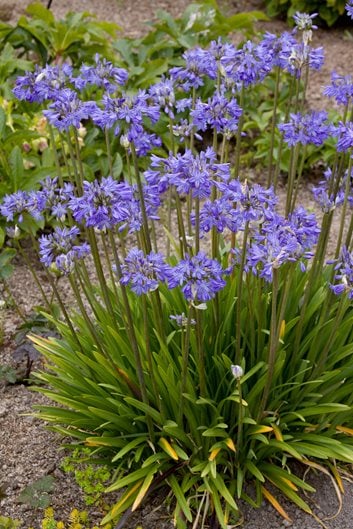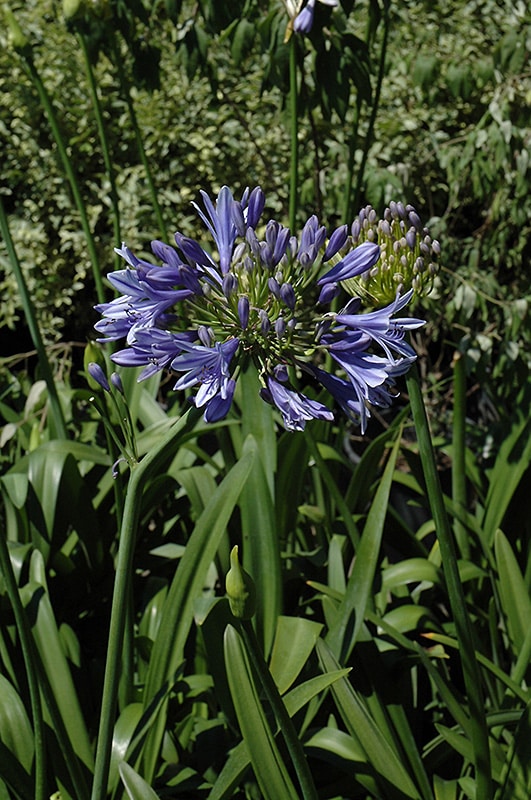Opening the Mysteries of Agapanthus: A Thorough Expedition of Ranges, Planting Techniques, and Upkeep Practices

Agapanthus, commonly shrouded in secret due to its varied selection of selections and elaborate maintenance needs, offers itself as an enigmatic subject for several garden fanatics. With a wide variety of cultivars available, each boasting distinct attributes and growth habits, recognizing the complexities of these plants can be both tough and gratifying. As we discover the nuances of growing techniques and dive into the necessary maintenance methods necessary to nurture these magnificent blooms, a globe of opportunities unfolds for those looking for to master the art of cultivating agapanthus.
Agapanthus Varieties Demystified
Agapanthus selections exhibit a varied variety of qualities, making it crucial for gardeners to comprehend the differences between them for effective farming. One of the most preferred variations is the Agapanthus africanus, typically recognized as the African Lily. This variety is prized for its striking blue or white flowers and its capacity to grow in both containers and garden beds. The Agapanthus praecox, or Blue Lily of the Nile, is one more preferred choice, flaunting big round clusters of blue or white flowers atop tall stalks.
For those seeking a more compact option, the Agapanthus 'Peter Pan' is a suitable option, with its smaller stature and delicate blue blooms. On the other hand, the Agapanthus 'Storm Cloud' selection supplies a significant panache with its deep purple blossoms and dark vegetation (Agapanthus). In addition, the Agapanthus 'Albus' attracts attention for its pure white blossoms, producing a sensational comparison in any type of garden setting
Recognizing these differences can assist gardeners pick the most suitable Agapanthus selection for their certain needs and choices, ensuring a vivid and growing garden display.
Growing Agapanthus Like a Pro
When planting Agapanthus for optimum growth and aesthetic influence, precise attention to dirt quality and sunshine exposure is extremely important. Agapanthus flourishes in well-draining dirt with a slightly acidic to neutral pH degree. Before growing, change hefty or compacted dirt with raw material such as compost to boost drain and fertility. Select a planting place that obtains full sunshine to partial shade, as Agapanthus normally prefers at the very least 6 hours of sunshine daily for robust flowering. When growing, ensure the crown of the plant sits at dirt level to avoid rot and urge healthy growth.

Vital Maintenance Tips for Agapanthus
To guarantee the continued wellness and vitality of your Agapanthus plants, what trick maintenance techniques should be prioritized throughout the expanding period? Sufficient watering is essential, particularly throughout the active growth periods in spring and summer season. Once established, Agapanthus plants like equally moist soil yet can endure short periods of dry spell. Mulching around the plants can aid retain dirt dampness and regulate temperature. Routine fertilizing is essential to advertise flowering and total plant health and wellness. Use a balanced plant food with a greater phosphorus web content to encourage blossom production. Deadheading spent flowers can extend the flowering period and boost the plant's look. Agapanthus plants gain from department every couple of years to stop congestion, boost blooming, and renew the plant. Replant the divisions in well-draining dirt improved with raw material. Maintain an eye out for usual pests and diseases, such as aphids or origin rot, and take prompt activity to address any issues that may occur. By following these maintenance suggestions, you can take pleasure in lively and healthy Agapanthus plants throughout the expanding season.
Troubleshooting Common Agapanthus Issues
Recognizing and immediately resolving common issues that may affect the health of your Agapanthus plants is important for maintaining their vigor and charm. One typical issue that Agapanthus may deal with is overwatering, resulting in root rot. To avoid this, make sure appropriate drain in the soil and prevent waterlogging. On the other hand, underwatering can cause yellowing and wilting of leaves. To battle this, develop index a regular watering timetable, guaranteeing the dirt is damp but not saturated. Agapanthus are also at risk to bugs such as aphids and snails. Routinely evaluate the plants for any type of indicators of invasion and treat them promptly with proper methods such as insecticidal soap or natural killers. Furthermore, poor sunlight can cause stunted growth and less blooms. Guarantee your Agapanthus receive adequate sunshine, ideally around 6-8 hours each day. By being vigilant and attending to these common problems immediately, you can help your Agapanthus prosper and prosper in your garden.
Optimizing Agapanthus Blooms: Professional Techniques
Enhancing the vibrancy and wealth of Agapanthus flowers calls for a critical approach that takes advantage of ideal expanding problems and specialist strategies. To make the most of Agapanthus blooms, start with selecting the best selection for your area and desired aesthetic. Agapanthus ranges vary in height, bloom shade, and blossom time, so choose one that fits your yard's demands.
Plant Agapanthus in well-draining dirt with enough sunshine exposure. Regular watering, specifically throughout the active expanding period, is essential to prevent stress and urge flowering.
Fertilize Agapanthus with a balanced plant food to promote blooming. Deadheading invested blooms can reroute the plant's energy right into generating brand-new blossoms (Agapanthus). Split overcrowded globs every couple of years to look what i found invigorate the plant and stimulate blooming
Finally, protect Agapanthus from bugs and illness that can impede blooming. Executing these expert techniques will aid you accomplish a spectacular screen of Agapanthus blossoms in your garden.
Conclusion
Finally, the mysteries of agapanthus have actually been introduced with a detailed expedition of varieties, planting strategies, and upkeep methods. By recognizing the different ranges readily available, planting them properly, and following important upkeep ideas, one can successfully cultivate and appreciate these stunning blossoms. By troubleshooting typical concerns and implementing skilled approaches, one can take full advantage of agapanthus blossoms and create a spectacular yard display screen. Via proper care and interest, agapanthus can grow and flourish view publisher site in any kind of garden setup.

When planting Agapanthus for optimal development and aesthetic effect, precise focus to soil top quality and sunlight exposure is extremely important.To plant Agapanthus like a pro, area the plants according to their fully grown size to permit for proper air circulation and prevent congestion. Agapanthus plants profit from division every couple of years to prevent overcrowding, boost blooming, and revitalize the plant.In verdict, the mysteries of agapanthus have been unveiled with a thorough exploration of ranges, growing techniques, and upkeep methods.